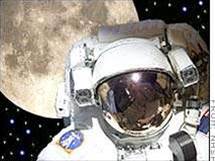
Nasa's Gravity Probe B satellite was launched in April 2004 carrying four ultra-precise gyroscopes to directly measure two effects predicted in Einstein's theory.
One of these is the geodetic effect, the amount by which the mass of the Earth warps the local space-time in which it resides. The other, called frame-dragging, is the amount by which the Earth drags local space-time around with it.
After poring over the results for 18 months researchers at Stanford University have declared the first of Einstein's predictions to be correct, as the data from the gyroscopes confirms the geodetic effect to a precision of better than one per cent.
"Gravity Probe B has been a great scientific adventure for all of us, and we are grateful to Nasa for its long history of support," said Professor Francis Everitt, a Stanford University physicist and principal investigator of the GP-B Relativity Mission.
"It is fascinating to be able to watch the Einstein warping of space-time directly in the tilting of these GP-B gyroscopes, more than a million times better than the best inertial navigation gyroscopes."
According to Einstein's theory, the geodetic warping of Earth's local space-time over the course of a year causes the spin axes of each gyroscope to shift from their initial alignment by an angle of 6.606 arc-seconds (0.0018 degrees) in the plane of the spacecraft's orbit.
Likewise, the twisting of Earth's local space-time causes the spin axis to shift by an even smaller angle of 0.039 arc-seconds (0.000011 degrees), about the width of a human hair viewed from a quarter of a mile away, in the plane of the Earth's equator.
Researchers are still collating data regarding the frame-dragging effect. Although the GP-B instrument has ample resolution to measure the frame-dragging effect precisely, the effect is 170 times smaller than the geodetic effect.
The team has discovered that small torque and sensor effects must be accurately modelled and removed from the result.
"We anticipate that it will take about eight more months of detailed data analysis to realise the full accuracy of the instrument and to reduce the measurement uncertainty from the 0.1 to 0.05 arc-seconds per year that we've achieved to date down to the expected final accuracy of better than 0.005 arc-seconds per year," said William Bencze, GP-B programme manager.
"Understanding the details of this science data is a bit like an archaeological dig. A scientist starts with a bulldozer, follows with a shovel, and then finally uses dental picks and toothbrushes to clear the dust away from the treasure. We are passing out the toothbrushes now."
The experiment's final result is expected on completion of the data analysis this December.
Asked for his final comment, Everitt said: "Always be suspicious of the news you want to hear."







.png&w=100&c=1&s=0)

 iTnews Benchmark Security Awards 2025
iTnews Benchmark Security Awards 2025
 Digital Leadership Day Federal
Digital Leadership Day Federal
 Government Cyber Security Showcase Federal
Government Cyber Security Showcase Federal
 Government Innovation Showcase Federal
Government Innovation Showcase Federal
 Digital NSW 2025 Showcase
Digital NSW 2025 Showcase










_(1).jpg&h=140&w=231&c=1&s=0)



